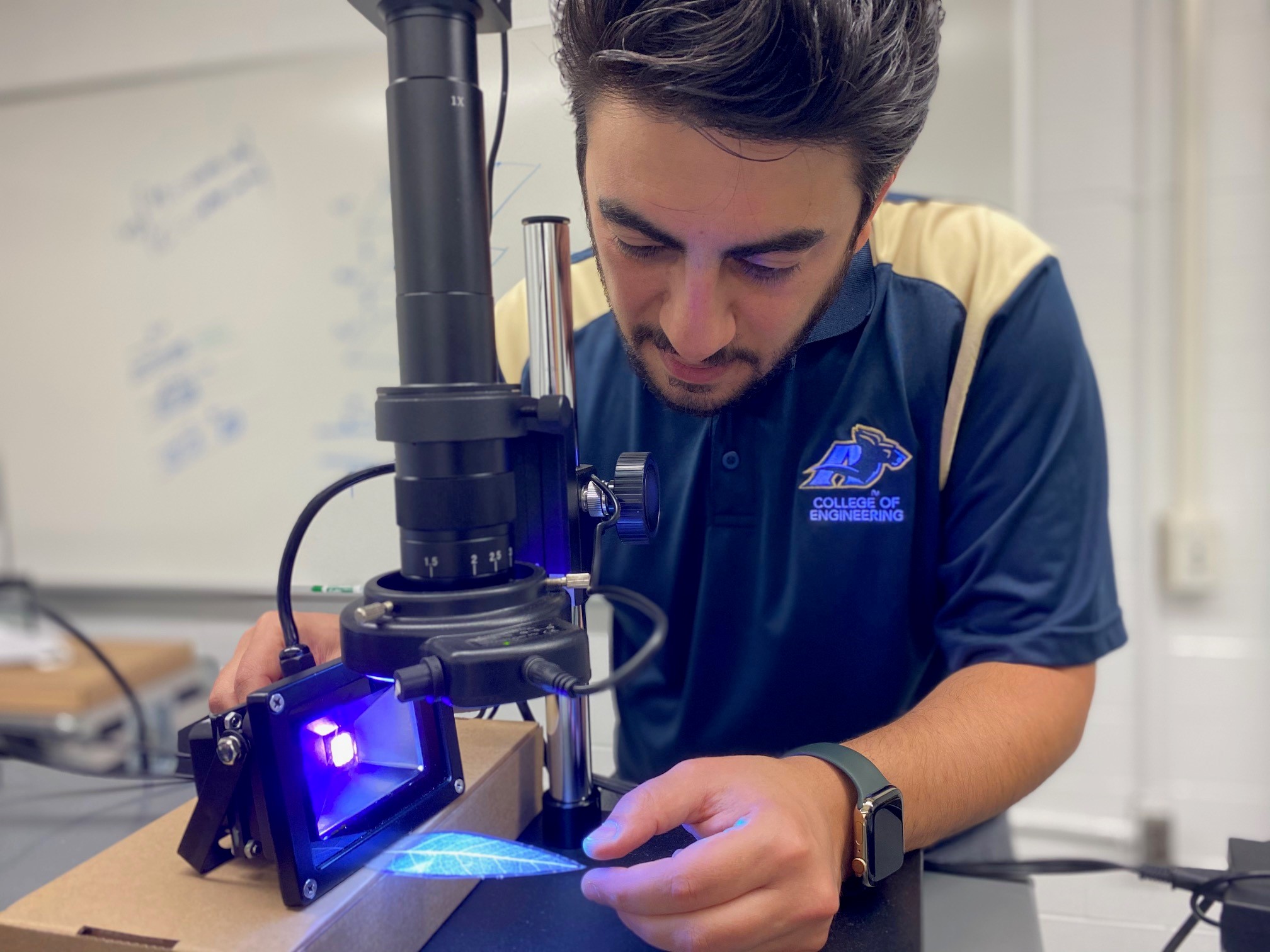
Nariman Mahabadi, Ph.D., is an assistant professor in the Department of Civil Engineering at The University of Akron. He received his doctoral degree in 2016 from the School of Sustainable Engineering and the Built Environment at Arizona State University. Dr. Mahabadi has been at UA since 2019.
1. You have been busy working on some interesting research on leaf venation and extraction that has resulted in a National Science Foundation award. First of all, can you tell us what leaf venation is?
A hot topic these days is bioinspiration — which is using systems found in nature to engineer something new. In our case, we are interested in using the vascular patterns of biological networks such as leaves (called leaf venation networks), root systems of plants and even cardiovascular system of animals and humans, to design engineering transport networks. These biological patterns have evolved over billions of years to solve a wide range of problems. For example, how water and nutrients move throughout the leaf has improved, as has its physical make-up which supports the entire structure against different loading conditions. The evolution and function of such branched networks is not only critical for an organism’s survival and fitness but have also inspired our team to improve the performance of various engineering flow networks from large-scale systems such as water drainage systems and traffic networks to small-scale systems such as fuel cells, solar cells, and synthetic organs.
2. What question or challenge were you setting out to address when you started this?
Plant leaves contain a vascular system of interconnected micro-size veins. The commonly held belief is that their design allows fluid to move efficiently, while providing high resilience in case of injury to the veins. Guided and inspired from nature, our research aims to test this hypothesis.
The most important scientific question for our group is: How can we use a similar approach to design engineering systems in various scales, from large-scales like drainage systems or traffic networks to small-scales like fuel cells?
3. How will the grant support your research?
This grant will allow our team to develop a computational framework to study the transport performance of different biological networks. We will then be able to determine if it is possible to use these as bio-inspired solutions for practical engineering problems. The grant will also help us to continue our multi-disciplinary collaboration with UC Berkeley lead by biologist Dr. Ben Blonder. UC Berkeley is developing a database of various species of plant leaves around the world. At UA, we will work on developing computational tools to simulate the flow transport and mechanical response of leaves in the database.
4. What are the possible real-world applications?
Think of the improvements that could be made any engineering systems that deal with flow, electric current or traffic transportation problems. This could include large-scale engineering systems like water distribution or drainage networks, or traffic networks to small-scale engineering systems like lithium battery systems where the porous electrode microstructure plays a critical role on the efficiency of the battery.
5. Why is your area of scientific discovery important (or relevant) for the average person?
Take drainage systems, for example. They are plagued with issues, mainly because of the improper performance of drainage networks. The impact of such failures could significantly reduce the expected water management or flood protection service levels and would lead to catastrophic consequences such as loss of lives or damage to properties and critical infrastructure.
Within the past decade, as climate change and urban flooding have become increasingly urgent challenges, the design of sustainable and resilient drainage systems have become more critical than ever. By inspiration from nature, we hope to address some of these challenges.
6. Do you have an analogy to help me understand your work?
Leaves are under constant attack from various sources, like pathogens, insects, and herbivores. If the leaf venation was not interconnected as it is, damage to any vein would result in the death of all the sections. Recent research indicates that the loops in the network allow flow to be routed around any injury to the veins, even in case of damage to the main vein. My colleagues and I believe the efficiency and resilience of leaf venation networks in the presence of damage and under varying loading conditions can provide incredible opportunities to improve the design of engineering networks.
7. What is your favorite aspect of your research?
Collaboration with other disciplines like biology and working with graduate and undergraduate students.
8. What about this particular type of research is so fascinating to you?
Exploring the underlying mechanisms of biological flow that will not only advance our current state of knowledge of biological transport networks but can provide exceptional opportunities to solve complex problems in discrete calculus, graph theory, and optimization. This would, in turn, lead to improvements in engineering transport networks that are critical for maintaining human life in ways that will make them more durable and operate with greater efficiency.
9. What does this award mean to you personally?
This is my first NSF research grant and I’m so thankful and excited. It is encouraging to have such a well-respected organization recognize our ideas, which are sometimes very high risk and radical to many.
10. What's next?
We are developing a numerical simulation tool in MATLAB which can simulate fluid flow in complex biological networks. Sometimes these networks include more than millions of micro-channels! My colleagues at UC Berkeley have developed a database of hundreds of leaf venation networks for us to study. We will use this database as an example. Then, we will assess the resilience of the leaf-like samples by simulating injury to the leaf so we get answers on how the flow is compromised if part of a leaf is damaged and the veins are compromised. We will select the most efficient topological characteristics from the leaf venation database, and examine if these topologies can be used in engineering transport networks.
Related content:
